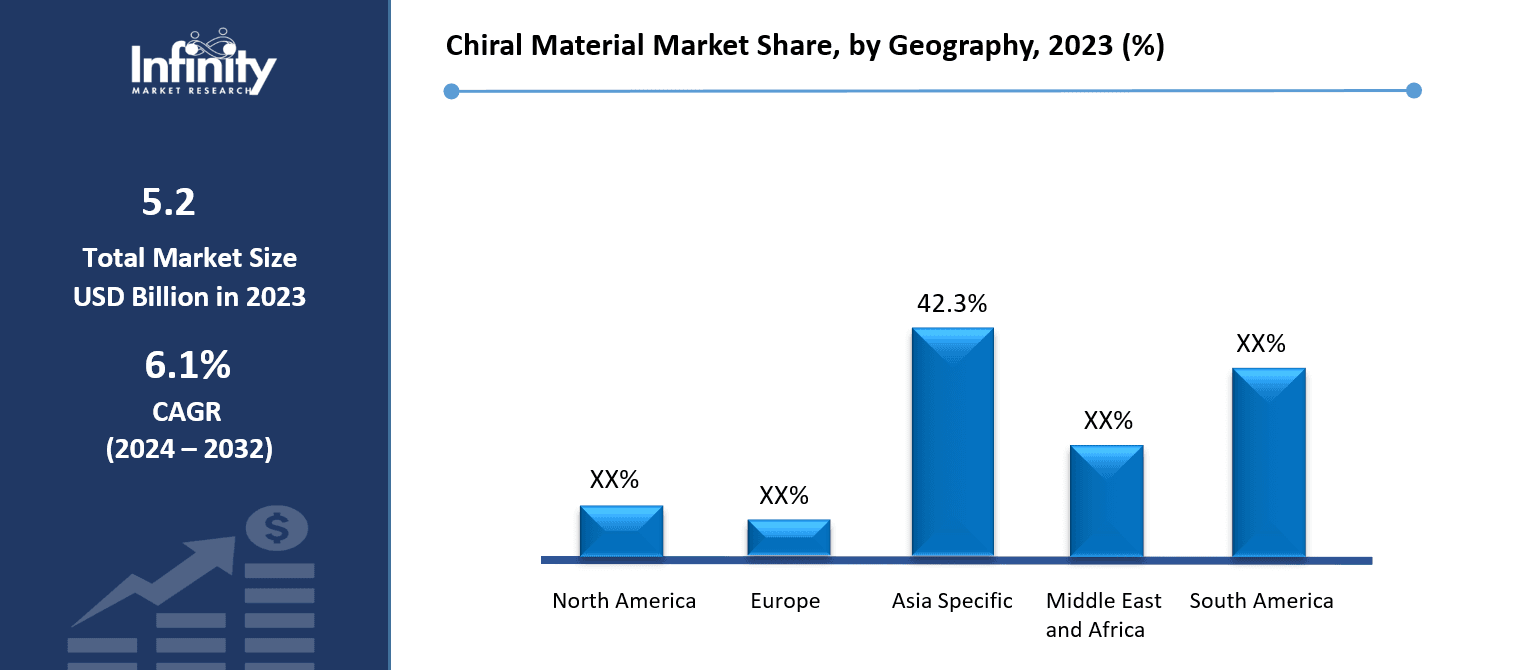
🔐 Secure Payment Guaranteed
Safe checkout with trusted global payment methods.
🌟 Why Choose Infinity Market Research?
At Infinity Market Research, we dont just deliver data — we deliver clarity, confidence, and competitive edge.
In a world driven by insights, we help businesses unlock the infinite potential of informed decisions.
Here why global brands, startups, and decision-makers choose us:
Industry-Centric Expertise
With deep domain knowledge across sectors — from healthcare and technology to manufacturing and consumer goods — our team delivers insights that matter.
Custom Research, Not Cookie-Cutter Reports
Every business is unique, and so are its challenges. Thats why we tailor our research to your specific goals, offering solutions that are actionable, relevant, and reliable.
Data You Can Trust
Our research methodology is rigorous, transparent, and validated at every step. We believe in delivering not just numbers, but numbers that drive real impact.
Client-Centric Approach
Your success is our priority. From first contact to final delivery, our team is responsive, collaborative, and committed to your goals — because you re more than a client; you re a partner.
Recent Reports
Global Myopia Control Lenses Market Report 2025-33
Hyaluronic Acid-based Dermal Fillers Market Report
Chiral Material Market
Chiral Material Market Global Industry Analysis and Forecast (2024-2032) By Type (Organic Chiral Material, Inorganic Chiral Material),By Application (Pharmaceuticals , Agrochemicals, Food and Beverages, Electronics, Others),By End-User(Healthcare, Agriculture, Consumer Goods, Electronics, Others) and Region
Feb 2025
Chemicals and Materials
Pages: 138
ID: IMR1789
Chiral Material Market Synopsis
Chiral Material Market Size Was Valued at USD 5.2 Billion in 2023, and is Projected to Reach USD 8.9 Billion by 2032, Growing at a CAGR of 6.1% From 2024-2032.
Where molecular chirality affects product efficacy and performance, the chiral material market is vital in sectors including pharmaceuticals, agrochemicals, and material sciences. Because many biological systems are selective for chiral forms, chiral materials—which come in two mirror images that can't be put on top of each other—are very important in drug development. The market is expanding under the need for high-purity enantiomers in medicines and increasing focus on green chemistry. Furthermore, developments in asymmetric synthesis and chiral separation technologies are improving the acceptance of chiral materials in many different fields.
Because single-enantiomer medications that show improved therapeutic efficacy and lowered adverse effects are so much needed, the pharmaceutical sector is the biggest user of chiral materials. Regulatory agencies like the FDA and EMA emphasize enantiopure formulations, driving market demand. Technologies such as chiral chromatography, asymmetric synthesis, and biocatalysis routinely produce high-purity enantiomers effectively. More advanced chiral drug formulations are being made because chronic diseases are becoming more common and personalized treatment is becoming more common.
Beyond drugs, the agricultural industry gains from chiral materials as well, especially in the creation of safer and more potent insecticides and herbicides. Many chiral pesticides show quite varied biological activity between enantiomers; one is quite strong while the other could be either inactive or toxic. Manufacturers are emphasizing enantiopure agrochemicals to lower toxicity and improve performance as regulatory authorities enforce tighter environmental and safety rules. In the next years, this pattern should maintain the increase of the market.
Chiral Material Market Outlook, 2023 and 2032: Future Outlook

Chiral Material Market Trend Analysis
Trend: Growing demand for single-enantiomer drugs and advancements in asymmetric synthesis
It is because the pharmaceutical industry needs more single-enantiomer drugs that the chiral material market is growing quickly. Compared to racemic combinations, these medications have fewer side effects and more efficacy since they comprise only one of the two possible mirror-image forms of a chemical. Regulatory bodies like the U.S. FDA and EMA are increasingly emphasizing the approval of enantiomerically pure pharmaceuticals, thereby propelling market development. The rise in chronic diseases and the need for more personalized treatments are also driving market demand. This forces pharmaceutical companies to use chiral materials to make better medicines.
Drivers: Pharmaceutical uses, regulatory backing for enantiopure formulations, and chiral separation advances are expanding.
The chiral materials market is growing quickly thanks to new technologies in chiral separation, more uses in pharmaceuticals, and government support for enantiopure formulations. Because of their increased efficacy and lower adverse effects than racemic mixes, enantiopure drugs—those with just one particular enantiomer—are becoming more popular in the pharmaceutical industry. Regulatory bodies like the FDA (U.S. Food and Drug Administration) and EMA (European Medicines Agency) have improved the rules that support enantiopure medicine formulations. This has led pharmaceutical companies to invest in better chiral synthesis and separation technologies. Growing regulatory support for high-purity chiral materials in drug research and manufacturing has driven demand for these materials.
Restraints: High production costs and complexity in chiral synthesis processes.
The high manufacturing costs and complexity of chiral synthesis techniques cause major limitations on the chiral material market. Chiral compounds are important in medicines, agrochemicals, and fine chemicals, but they need to be made using enantioselective synthesis techniques that can involve complicated catalysts, expensive raw materials, and a lot of work. Chiral molecules that are very pure are needed for advanced techniques like asymmetric synthesis and biocatalysis, which help lower production costs even more. Additionally, strict rules for enantiomeric purity in industries like pharmaceuticals make it harder to make these materials and lower their cost and ability to be used on a large scale.
Opportunities: Expansion in agrochemicals, optoelectronics, and sustainable chiral chemistry innovations.
Thanks to developments in agrochemicals, optoelectronics, and sustainable chiral chemistry breakthroughs, the market for chiral materials is seeing notable expansion. In agrochemicals, enantioselective pesticides and herbicides improve crop protection while lowering environmental impact, giving producers chances to create environmentally friendly formulations. The ability of chiral materials to control light polarization is useful in optoelectronics, especially in liquid crystal displays and photonic devices. This makes displays more efficient and opens up new optical uses. Furthermore, a major driver is still the pharmaceutical sector, since demand for enantiomerically pure pharmaceuticals drives developments in sustainable chiral synthesis, thereby lowering manufacturing costs and improving therapeutic efficacy.
Chiral Material Market Segment Analysis
Chiral Material Market Segmented on the basis of By Type, By Application and By End-User.
By Type
o Organic Chiral Material
o Inorganic Chiral Material
By Application
o Pharmaceuticals
o Agrochemicals
o Food and Beverages
o Electronics
o Others
By End User
o Healthcare
o Agriculture
o Consumer Goods
o Electronics
o Others
By Region
o North America (U.S., Canada, Mexico)
o Eastern Europe (Bulgaria, The Czech Republic, Hungary, Poland, Romania, Rest of Eastern Europe)
o Western Europe (Germany, UK, France, Netherlands, Italy, Russia, Spain, Rest of Western Europe)
o Asia Pacific (China, India, Japan, South Korea, Malaysia, Thailand, Vietnam, The Philippines, Australia, New-Zealand, Rest of APAC)
o Middle East & Africa (Turkey, Bahrain, Kuwait, Saudi Arabia, Qatar, UAE, Israel, South Africa)
o South America (Brazil, Argentina, Rest of SA)
By Type, Organic Chiral Material segment is expected to dominate the market during the forecast period
Both organic and inorganic chiral compounds—both of which are vitally important in many sectors, including medicines, agrochemicals, and materials science—are part of the Chiral Material Market. Mostly carbon-based, organic chiral compounds are utilized in medication manufacturing; especially in enantiomerically pure drugs, where one enantiomer has better therapeutic effects than the other. Driven by strict regulatory rules and developments in asymmetric synthesis methods, the growing need for chiral pharmaceuticals is driving expansion of this market. Further increasing their commercial potential are organic chiral compounds used in agrochemicals, tastes, and scents. Conversely, inorganic chiral materials usually consist of non-carbon elements based on metal that show chirality in their structural configuration. In sectors including catalysis, optoelectronics, and advanced material coatings, these materials are becoming rather popular. Emerging uses including chiral sensing, spintronics, and circularly polarized light emission for display technologies depend especially on chiral inorganic nanomaterials. Along with developments in nanotechnology and material sciences, the increasing research interest in chiral inorganic materials may generate fresh growth prospects in this industry. The whole Chiral Material Market is likely to increase significantly in the next years as both organic and inorganic chiral materials keep extending their industrial uses.
By End-User, Healthcare segment expected to held the largest share
Driven by its multiple uses in several sectors, including healthcare, agriculture, consumer products, and electronics, the chiral material market is seeing a notable increase. Particularly in enantiopure medications that improve efficacy and lower adverse effects, chiral materials are significant in the healthcare industry for the creation of pharmaceuticals. Targeting particular biological processes, chiral pesticides and herbicides provide enhanced potency and environmental safety; therefore, they benefit agriculture. Using chiral compounds in tastes, scents, and personal care items, the consumer goods sector guarantees premium formulations. In the electronics industry, chiral materials are becoming important parts of high-tech optoelectronics, sensors, and liquid crystal displays (LCDs), which makes the devices work better and use less power.
Chiral Material Market Regional Insights
Asia Pacific is Expected to Dominate the Market Over the Forecast period
The Asia-Pacific region is expected to lead the chiral material market over the next few years thanks to its fast industrialization, rising pharmaceutical production, and rising demand for agrochemicals. Key contributors are nations like China, India, and Japan because of their established chemical and pharmaceutical sectors. The market is growing because more chiral compounds are used to make drugs, especially enantiomerically pure ones. Furthermore, driving market expansion in the area are government projects supporting research and development in specialty chemicals as well as increasing biotechnology and life sciences investments. Thanks mostly to its increasing application across medicines, agrochemicals, and flavors and fragrances, the global chiral material market is seeing a notable increase. Tough rules that stress the importance of chirality in therapeutic effectiveness and safety have increased the need for enantiomerically pure substances in the pharmaceutical industry. Technological developments in asymmetric synthesis and biocatalysis have improved chiral material synthesis and biocatalysis efficiency even more. Although Asia Pacific boasts the highest market share, developments in chiral separation methods and higher chemical industry R&D activity are driving consistent expansion in areas including North America and Europe.
Chiral Material Market Share, by Geography, 2023 (%)

Active Key Players in the Chiral Material Market
o Chiral Technologies Inc. (USA)
o BASF SE (Germany)
o Solvias AG (Switzerland)
o Strem Chemicals Inc. (USA)
o Johnson Matthey Plc (UK)
o W. R. Grace & Co. (USA)
o Daicel Corporation (Japan)
o Chiral Quest (Suzhou) Co., Ltd. (China)
o Merck KGaA (Germany)
o Sigma-Aldrich Corporation (USA)
o Chiral Solutions (USA)
o Regis Technologies, Inc. (USA)
o Chiral Technologies Europe (France)
o Chiralix B.V. (Netherlands)
o Chiral Technologies India Pvt. Ltd. (India)
o Advanced Biochemical Compounds (ABCR) GmbH (Germany)
o Chiral Technologies Japan (Japan)
o Chiral Technologies China (China)
o Chiral Technologies Korea (South Korea)
o Chiral Technologies Taiwan (Taiwan)
o others
Global Chiral Material Market Scope
|
Global Chiral Material Market | |||
|
Base Year: |
2023 |
Forecast Period: |
2024-2032 |
|
Historical Data: |
2017 to 2023 |
Market Size in 2023: |
USD 5.2 Billion |
|
Forecast Period 2024-32 CAGR: |
6.1% |
Market Size in 2032: |
USD 8.9 Billion |
|
Segments Covered: |
By Type |
· Organic Chiral Material · Inorganic Chiral Material | |
|
By Application |
· Pharmaceuticals · Agrochemicals · Food and Beverages · Electronics · Others | ||
|
By End-User |
· Healthcare · Agriculture · Consumer Goods · Electronics · Others | ||
|
By Region |
· North America (U.S., Canada, Mexico) · Eastern Europe (Bulgaria, The Czech Republic, Hungary, Poland, Romania, Rest of Eastern Europe) · Western Europe (Germany, UK, France, Netherlands, Italy, Russia, Spain, Rest of Western Europe) · Asia Pacific (China, India, Japan, South Korea, Malaysia, Thailand, Vietnam, The Philippines, Australia, New-Zealand, Rest of APAC) · Middle East & Africa (Turkey, Bahrain, Kuwait, Saudi Arabia, Qatar, UAE, Israel, South Africa) · South America (Brazil, Argentina, Rest of SA) | ||
|
Key Market Drivers: |
· Pharmaceutical uses, regulatory backing for enantiopure formulations, and chiral separation advances are expanding. | ||
|
Key Market Restraints: |
· High production costs and complexity in chiral synthesis processes. | ||
|
Key Opportunities: |
· Expansion in agrochemicals, optoelectronics, and sustainable chiral chemistry innovations. | ||
|
Companies Covered in the report: |
· Chiral Technologies Inc. (USA), BASF SE (Germany), Solvias AG (Switzerland), Strem Chemicals Inc. (USA), Johnson Matthey Plc (UK), W. R. Grace & Co. (USA), Daicel Corporation (Japan), Chiral Quest (Suzhou) Co., Ltd. (China), Merck KGaA (Germany), Sigma-Aldrich Corporation (USA), Chiral Solutions (USA), Regis Technologies, Inc. (USA), Chiral Technologies Europe (France), Chiralix B.V. (Netherlands), Chiral Technologies India Pvt. Ltd. (India), Advanced Biochemical Compounds (ABCR) GmbH (Germany), Chiral Technologies Japan (Japan), Chiral Technologies China (China), Chiral Technologies Korea (South Korea), Chiral Technologies Taiwan (Taiwan), others. | ||
📘 Frequently Asked Questions
1. What would be the forecast period in the Chiral Material Market research report?
Answer: The forecast period in the Chiral Material Market research report is 2024-2032.
2. Who are the key players in the Chiral Material Market?
Answer: Chiral Technologies Inc. (USA), BASF SE (Germany), Solvias AG (Switzerland), Strem Chemicals Inc. (USA), Johnson Matthey Plc (UK), W. R. Grace & Co. (USA), Daicel Corporation (Japan), Chiral Quest (Suzhou) Co., Ltd. (China), Merck KGaA (Germany), Sigma-Aldrich Corporation (USA), Chiral Solutions (USA), Regis Technologies, Inc. (USA), Chiral Technologies Europe (France), Chiralix B.V. (Netherlands), Chiral Technologies India Pvt. Ltd. (India), Advanced Biochemical Compounds (ABCR) GmbH (Germany), Chiral Technologies Japan (Japan), Chiral Technologies China (China), Chiral Technologies Korea (South Korea), Chiral Technologies Taiwan (Taiwan), others.
3. What are the segments of the Chiral Material Market?
Answer: The Chiral Material Market is segmented into By Type, By Application, End User and region. By Type (Organic Chiral Material, Inorganic Chiral Material),By Application (Pharmaceuticals , Agrochemicals, Food and Beverages, Electronics, Others),By End-User(Healthcare, Agriculture, Consumer Goods, Electronics, Others). By region, it is analyzed across North America (U.S.; Canada; Mexico), Eastern Europe (Bulgaria; The Czech Republic; Hungary; Poland; Romania; Rest of Eastern Europe), Western Europe (Germany; UK; France; Netherlands; Italy; Russia; Spain; Rest of Western Europe), Asia-Pacific (China; India; Japan; Southeast Asia, etc.), South America (Brazil; Argentina, etc.), Middle East & Africa (Saudi Arabia; South Africa, etc.).
4. What is the Chiral Material Market?
Answer: Chiral materials are substances that possess chirality, meaning their molecular structures exist in two non-superimposable mirror image forms called enantiomers. This property significantly impacts their interaction with biological systems, light, and other chemicals. Chiral materials play a crucial role in pharmaceuticals, agrochemicals, and advanced materials, as enantiomers can exhibit distinct chemical and biological behaviors. Their applications extend to drug development, asymmetric synthesis, chiral chromatography, and optoelectronics, where precise enantiomeric control enhances efficiency, safety, and performance.
5. How big is the Chiral Material Market?
Answer: Chiral Material Market Size Was Valued at USD 5.2 Billion in 2023, and is Projected to Reach USD 8.9 Billion by 2032, Growing at a CAGR of 6.1% From 2024-2032.


🔐 Secure Payment Guaranteed
Safe checkout with trusted global payment methods.
🌟 Why Choose Infinity Market Research?
- Accurate & Verified Data:Our insights are trusted by global brands and Fortune 500 companies.
- Complete Transparency:No hidden fees, locked content, or misleading claims — ever.
- 24/7 Analyst Support:Our expert team is always available to help you make smarter decisions.
- Instant Savings:Enjoy a flat $1000 OFF on every report.
- Fast & Reliable Delivery:Get your report delivered within 5 working days, guaranteed.
- Tailored Insights:Customized research that fits your industry and specific goals.




